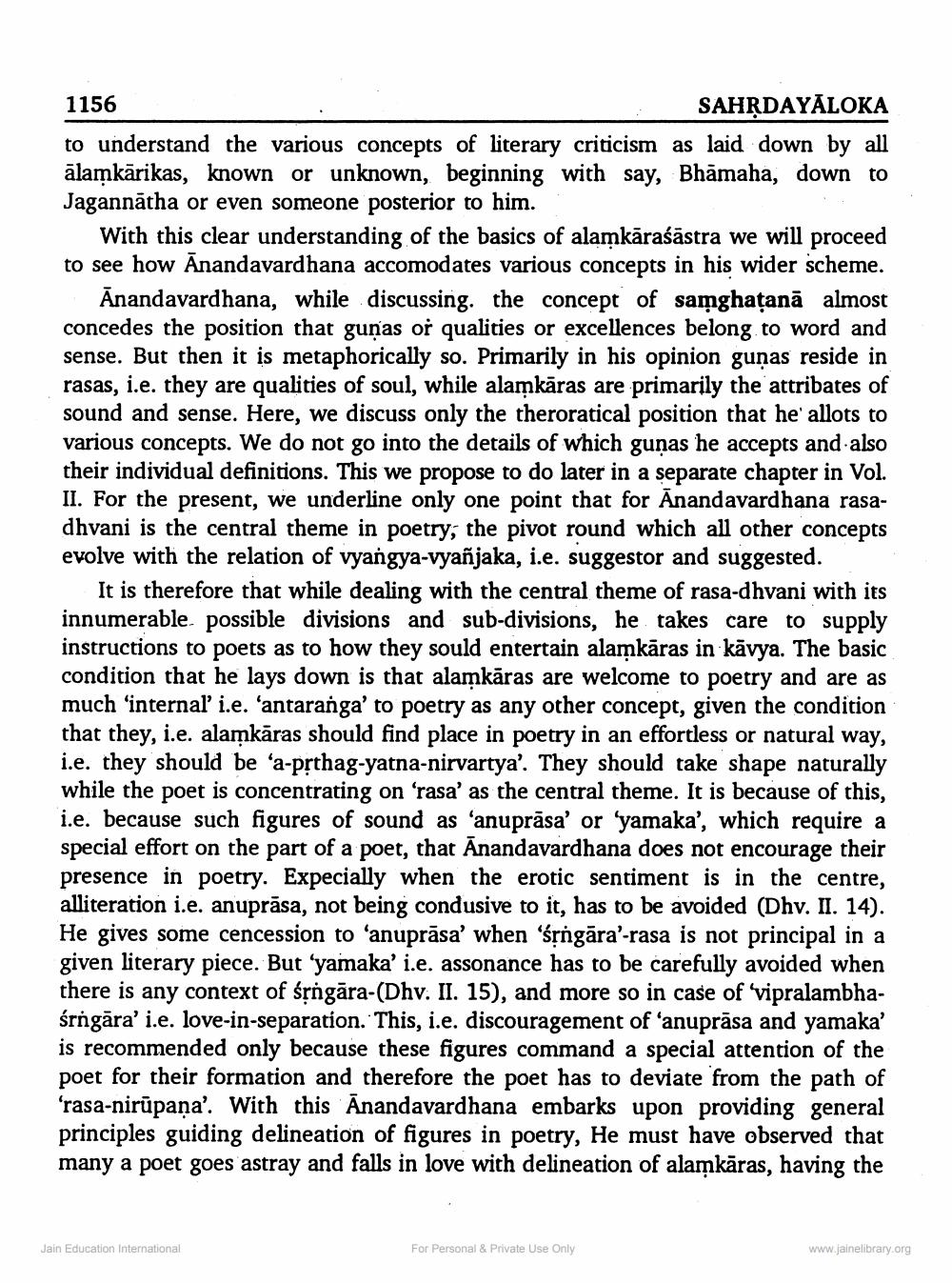________________
1156
SAHRDAYĀLOKA to understand the various concepts of literary criticism as laid down by all ālamkārikas, known or unknown, beginning with say, Bhāmaha, down to Jagannātha or even someone posterior to him.
With this clear understanding of the basics of alamkāraśāstra we will proceed to see how Anandavardhana accomodates various concepts in his wider scheme.
Anandavardhana, while discussing. the concept of samghatanā almost concedes the position that gunas or qualities or excellences belong to word and sense. But then it is metaphorically so. Primarily in his opinion gunas reside in rasas, i.e. they are qualities of soul, while alamkāras are primarily the attribates of sound and sense. Here, we discuss only the theroratical position that he' allots to various concepts. We do not go into the details of which gunas he accepts and also their individual definitions. This we propose to do later in a separate chapter in Vol. II. For the present, we underline only one point that for Anandavardhana rasadhvani is the central theme in poetry; the pivot round which all other concepts evolve with the relation of vyangya-vyañjaka, i.e. suggestor and suggested.
It is therefore that while dealing with the central theme of rasa-dhvani with its innumerable. possible divisions and sub-divisions, he takes care to supply instructions to poets as to how they sould entertain alamkāras in kavya. The basic condition that he lays down is that alamkāras are welcome to poetry and are as much 'internal i.e. 'antaranga' to poetry as any other concept, given the condition that they, i.e. alamkāras should find place in poetry in an effortless or natural way, i.e. they should be 'a-prthag-yatna-nirvartya'. They should take shape naturally while the poet is concentrating on 'rasa' as the central theme. It is because of this, i.e. because such figures of sound as 'anuprāsa' or 'yamaka', which require a special effort on the part of a poet, that Anandavardhana does not encourage their presence in poetry. Expecially when the erotic sentiment is in the centre, alliteration i.e. anuprāsa, not being condusive to it, has to be avoided (Dhv. II. 14). He gives some cencession to 'anuprāsa' when 'śrngāra'-rasa is not principal in a given literary piece. But 'yamaka' i.e. assonance has to be carefully avoided when there is any context of śộngāra-(Dhv. II. 15), and more so in case of vipralambhaśrngāra' i.e. love-in-separation. This, i.e. discouragement of 'anuprāsa and yamaka' is recommended only because these figures command a special attention of the poet for their formation and therefore the poet has to deviate from the path of ‘rasa-nirūpaña'. With this Ānandavardhana embarks upon providing general principles guiding delineation of figures in poetry, He must have observed that many a poet goes astray and falls in love with delineation of alamkāras, having the
Jain Education International
For Personal & Private Use Only
www.jainelibrary.org




